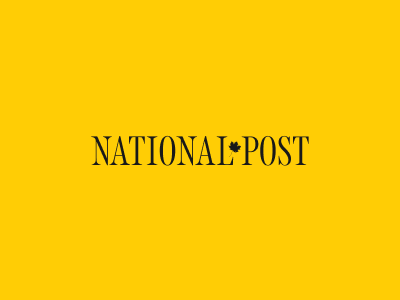
- Select a language for the TTS:
- UK English Female
- UK English Male
- US English Female
- US English Male
- Australian Female
- Australian Male
- Language selected: (auto detect) - EN
Play all audios:
President Macron recently gave his backing to nuclear power, saying it is the only way France can meet targets to reduce greenhouse gas carbon dioxide. MACRON: NUCLEAR ENERGY IS THE FUTURE
FOR ECO-FRIENDLY FRANCE At the same time the nuclear safety body Autorité de Sûreté Nucléaire (ASN ) launched a public consultation over plans to extend the life of 32 nuclear reactors built
in the 1970s beyond 40 years – the expected lifespan when they were built. President Macron visited the forge owned by nuclear power station maker Framatome, at Le Creusot, last month to
make a speech backing nuclear power. His visit is seen as preparing the way for France to order a new EPR reactor, even though the first, being built at Flamanville near Cherbourg, is 10
years behind schedule and costs have risen from an initial €3.4billion to €19.1billion. IN THE 1970S, FRANCE DECIDED TO PRODUCE MOST OF ITS ELECTRICITY FROM NUCLEAR POWER AFTER THE ECONOMY
WAS HIT BY THE OIL CRISIS Ironically, there are new warnings of possible power cuts if there is a sharp cold spell, as in the 1970s – this time due to non-essential maintenance not being
done during lockdown. Using a modified American pressurised water design, the French reactors each produce 900MW and are still operated by state-owned EDF. Similar reactors in the US have
been cleared to run for 80 years. EDF wants to run the reactors for another 20 years. They undergo inspection every 10 years and ASN has declared them safe after a fourth 10-year check but,
before giving final approval for an extension, it is consulting the public. A spokeswoman for ASN , previously criticised as being staffed by pro-nuclear former EDF engineers, told
Connexion: “This decision will define the conditions for these reactors’ continued functioning. “It will prescribe the major improvements in safety planned by EDF and also the supplementary
dispositions ASN considers necessary. “We have not yet taken a generic decision on all the 900MW reactors. After we do that, we will look at each individual reactor. Nothing is decided yet.”
Extra checks, including looking at new safety features such as putting pumps high in buildings and higher protective dikes, decided after the 2011 Fukushima disaster, have been programmed
until 2022. The Fukushima reactors were of a boiling water design, not a PWR design, but ASN has said some of the causes of the accident – in particular, pumps situated on the ground floor
being flooded – should be insured against in the French designs. Greenpeace France, the country’s most visible anti-nuclear organisation, has issued a 10- point statement, saying
prolongation is “too risky, dangerous and costly”. Of particular concern, it claims, are the cores, which it says cannot be replaced and become fragile. A cracked core of a reactor was a
major factor at the Fukushima accident. It points to the trouble EDF is having with Flamanville, with ASN inspections showing welding of crucial parts being botched, and records being
falsified at Framatome in charge of building the core, as justification for saying similar faults are possibly hidden in the 900MW reactors. Standards in the 1970s, for issues such as jets
crashing into reactors, were much less strict than now, Greenpeace adds. It also says pollution from the reactors is common, both from leaks and from the nuclear waste they produce. HOW
FRANCE POWERS ITSELF France is known for being the industrialised nation most dependent on nuclear power stations for its electricity but things are changing. Electricity network firm RTE
said on a cold mid-December day that 62% of electricity (equivalent to 46,381MW) was coming from nuclear power. Hydro-electricity was next on the list, producing 17%, mainly from dams built
in the Alps and Pyrenees in the 20th century. Gas provided 11% of the power – much of it shipped from Algeria in purpose-built ships – wind 6%, coal 1%, solar power 1% and bioenergy (such as
wood or methane) 1%. On that day, the emergency power stations burning diesel were not operational. President Macron abandoned in 2017 the target set by President Hollande of reducing the
share of nuclear power to 50% by 2025, with the target now for 2035, if feasible. Increasing the share of renewable energy in France is problematic – new wind turbines on land provoke strong
opposition from locals, angry at the impact on views, noise, lights at night and loss of farming land. Projects for offshore wind farms have still not arrived 10 years after being launched.
To counter arguments, the government unveiled a plan imposing limits on the number in any one region, more consultation and cash for surrounding communes, and opening up military training
areas for wind turbines. It is working to boost the number of photovoltaic panels in France, with subsidies to householders – encouraging them to use “auto-consumption” plans, where they use
the electrical power they produce and sell only the surplus to the grid. Funding this means that some large photovoltaic power stations set up with heavy subsidies in the last 20 years will
see their guaranteed prices cut – something which could deter further investment. RELATED STORIES Geothermal power plant closed in Strasbourg after earthquake Hydrogen planes by 2035 is
'far too late' Floating wind farm coming to French seas in 2022








:max_bytes(150000):strip_icc():focal(149x0:151x2)/angelina-jolie-cover-300-1-6715669e783f4c68a6d3db0e6f067f15.jpg)
